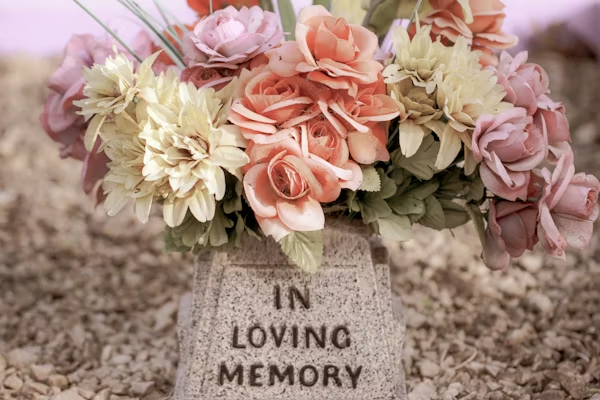In every culture, honoring loved ones after death is a deeply meaningful tradition. Among the many ways people choose to preserve memory and legacy, inurnment has become an increasingly recognized and respected practice. It is a thoughtful step that allows families to safeguard the cremated remains of those they love in a dignified and lasting manner. While burial and cremation are often widely discussed, inurnment is sometimes overlooked, even though it carries its own symbolism, rituals, and emotional value.
This article explores what inurnment is, its significance, the options available, and why many families choose it as a way to create a lasting tribute.
What is Inurnment?
Inurnment is the act of placing cremated remains into an urn and then setting that urn in a permanent resting place. The urn can be placed in a columbarium (a special wall or structure built for urns), a family mausoleum, a cemetery niche, or even within private memorial spaces. Unlike burial, which involves interring a body, inurnment is specifically connected to cremation and the placement of ashes.
For many families, it is more than a physical act. It represents closure, remembrance, and a space where loved ones can return to honor the memory of the deceased.
The Growing Popularity of Inurnment
In recent years, cremation has become more common across the globe, and with that shift, inurnment has also gained importance. Several factors contribute to its rise, including affordability compared to traditional burials, environmental considerations, and the flexibility it provides families in planning a memorial.
Unlike scattering ashes, which can be symbolic but permanent in its own way, inurnment offers a tangible site to visit—a place where memories live on in stone, bronze, or marble.
Different Types of Inurnment Spaces
There isn’t just one way to carry out inurnment. Depending on personal preference, family tradition, or cultural background, families can choose from several options:
Columbarium Niches
Columbaria are beautifully designed structures within cemeteries or memorial parks. Each niche within the columbarium holds an urn, sometimes sealed with engraved plaques that carry the name, dates, and personal messages.
Family Mausoleums
Some families choose to place urns in mausoleums, often alongside caskets or other urns. These grand structures carry a sense of permanence and heritage.
Ground Inurnment
Similar to a traditional burial, an urn may also be placed underground, usually in a small vault specifically made for cremation urns.
Home Memorials
Not all inurnments happen in cemeteries. Some families prefer to create a special memorial area within their homes, where the urn rests as part of daily remembrance.
Why Families Choose Inurnment
Inurnment has its own unique advantages, which is why many families feel drawn to it.
It provides a dedicated space for remembrance, offering relatives and friends a place to gather and pay respects. It also allows flexibility in timing, since cremation and inurnment can happen days, weeks, or even months after death, giving grieving families more time to prepare.
Moreover, inurnment can be seen as an eco-friendly choice compared to traditional burials, requiring less land and fewer resources.
Cultural and Religious Perspectives on Inurnment
Different faiths and traditions hold varying views about cremation and inurnment.
For instance, in some branches of Christianity, cremation followed by inurnment is accepted as long as the ashes are placed in a sacred space. In Buddhist traditions, cremation and respectful placement of ashes are widely practiced. Hindu customs often favor scattering ashes in sacred rivers, but some families are now embracing inurnment as a way to combine tradition with practicality.
Cultural diversity around inurnment shows that it is not a one-size-fits-all practice, but rather a deeply personal choice influenced by faith, values, and family history.
The Emotional Significance of Inurnment
Beyond the physical act, inurnment offers emotional comfort. Having a designated place to visit provides solace to grieving families, helping them process loss over time. It also allows future generations to connect with their heritage, as memorials serve as lasting markers of family legacy.
For many, inurnmen’t represents continuity—the idea that while life ends, love and remembrance endure.
Planning an Inurnment Ceremony
Just like funerals and burials, inurnments can include meaningful ceremonies. Families may choose to hold a private gathering at the time the urn is placed, with readings, prayers, or music.
Some ceremonies are deeply religious, while others are simple and reflective. The important element is personalization—making the moment a reflection of the life being honored.
Inurnment vs. Scattering of Ashes
One common question families face after cremation is whether to scatter ashes or place them inurned. Both hold emotional value, but they differ in permanence.
Scattering ashes allows for symbolic gestures—releasing the loved one into nature or into a place of special meaning. However, it does not provide a permanent site for remembrance. Inurnmen’t, on the other hand, ensures there is a fixed memorial, allowing multiple generations to visit and pay their respects.
For this reason, some families even combine both practices: keeping a portion of ashes inurned while scattering the rest.
Legal and Practical Considerations
While inurnmen’t is largely a personal decision, it is also subject to local regulations. Cemeteries and memorial parks often have specific rules about urn materials, vaults, or inscription formats. Families should also consider costs, which can vary depending on the type of urn, niche, or ceremony chosen.
Planning ahead, either through pre-arrangements or discussions with loved ones, can ease the process and reduce stress during an already difficult time.
Modern Innovations in Inurnment
In today’s digital and environmentally conscious age, inurnmen’t has taken on new forms. Some memorial parks now offer digital QR codes on plaques, allowing visitors to scan and access online memorial pages. Biodegradable urns are also growing in popularity, designed to break down naturally and even support tree growth, blending memory with environmental renewal.
These innovations show how traditions evolve while still honoring the timeless need for remembrance.
The Role of Inurnment in Legacy and Memory
At its heart, inurnmen’t is about legacy. It is not only a way to handle ashes but also a choice about how someone will be remembered. The space created through inurnmen’t becomes a story told in stone, urns, plaques, and even family rituals.
Generations later, such memorials allow descendants to feel connected to their ancestry, grounding them in history while carrying forward love and respect.
Conclusion
Inurnmen’t is more than the act of placing ashes in an urn—it is a practice rooted in dignity, remembrance, and love. It offers families a sacred space for reflection, a way to honor tradition, and a lasting tribute to those who have passed.
Whether chosen for religious, cultural, emotional, or practical reasons, inurnmen’t continues to grow in relevance as people seek meaningful ways to honor life after death. It bridges the past with the present, ensuring that memories remain alive for generations to come.
FAQs About Inurnment
1. What does inurnment mean?
It means placing cremated remains into an urn and securing it in a permanent resting place.
2. Where can inurnments take place?
They can be in columbaria, mausoleums, cemetery grounds, or private memorials.
3. Is inurnment the same as burial?
No, burial involves a body, while inurnment specifically involves cremated ashes.
4. Can families hold a ceremony for inurnment?
Yes, many families organize special ceremonies for placing the urn.
5. How long after cremation can inurnment happen?
It can happen immediately or even months later, depending on family preference.
6. Can inurnment be combined with scattering ashes?
Yes, some families choose to scatter part of the ashes and inurn the rest.











